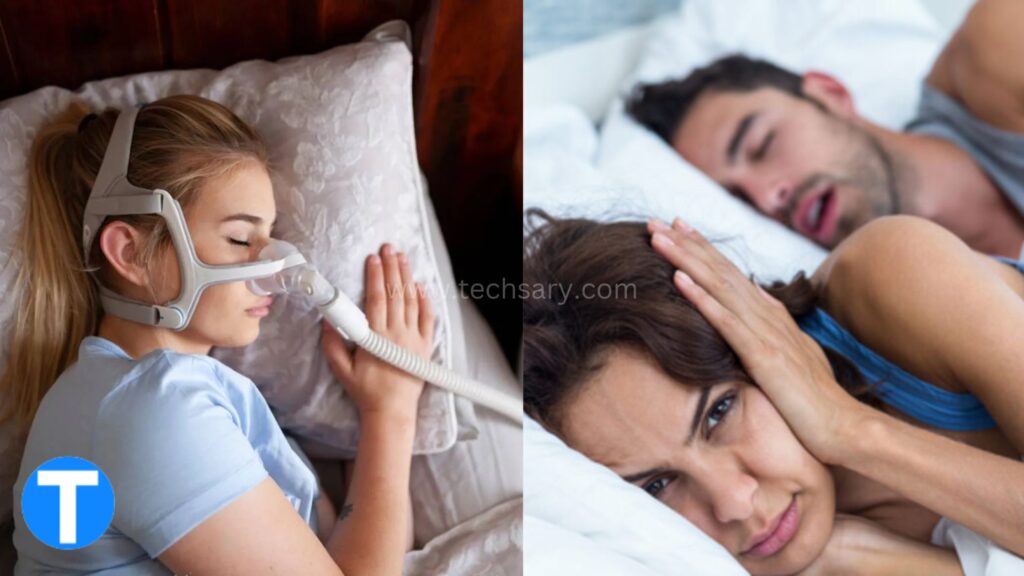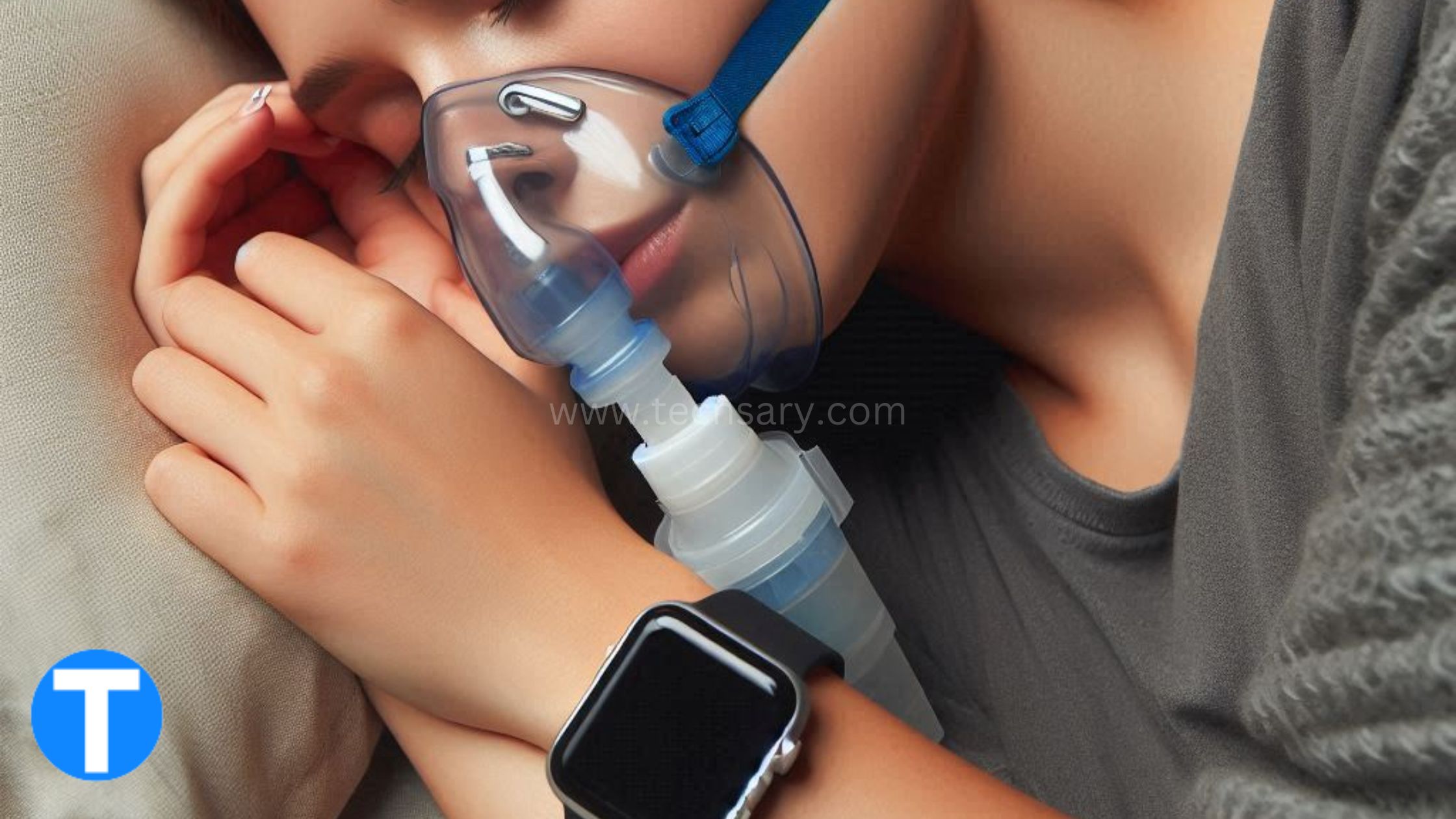Can a smartwatch really detect sleep apnea? As wearable technology evolves, it is a common question that comes to everyone’s mind. We already know that smartwatches can track our heart rate, sleep cycle, and oxygen levels, but can they monitor a complex problem such as sleep apnea? In this article, we will look at how smartwatches monitor your sleep, how they are better than conventional methods, and whether they provide practical solutions for people who worry about sleep apnea. Let’s delve into this post.
What is Sleep Apnea and Can a Smartwatch Detect Sleep Apnea?
Smartwatches generally do not directly detect sleep apnea; instead, they monitor sleep patterns and provide data. Sleep apnea is a condition when someone’s breath repeatedly stops and starts during sleep, resulting in bad sleep and associated health risks like high blood pressure, heart disease, and stroke. But early detection and treatment are crucial. If you ignore this, you may face long-term effects on your overall health and well-being.
The Science Behind Sleep Apnea Detection in Wearable Technology
Here’s a step-by-step breakdown of how a smartwatch can detect sleep apnea and the science behind it:
- Heart Rate Monitoring: Heart rate monitoring in smartwatches is possible because of optical sensors. Sleep apnea can cause irregular heart rates during sleep, which may indicate breathing disruptions.
- Oxygen Saturation (SpO2) Sensors: Many smartwatches have sensors that measure blood oxygen levels. A decrease in the amount of oxygen in the blood when a person is asleep is one of the main symptoms of sleep apnea, as breathing interruptions reduce oxygen intake.
- Movement Tracking: Accelerometers are used in smartwatches to track every sleep activity. On the other hand, sleep apnea can cause restlessness and sudden movements due to waking up briefly to breathe.
- Respiratory Rate: Some wearables use heart rate fluctuations or chest movements to determine the breathing rhythm. It can detect pauses or irregularities in breathing, which are common in sleep apnea.
- Sleep Cycle Analysis: Smartwatches provide information on sleep stages (light, deep, REM) and disruptions in the sleep cycle, which may indicate disrupted sleep consistent with sleep apnea.
- Data Integration: Smartwatches can detect signs of sleep apnea over time by using existing data such as heart rate, oxygen levels, and movement patterns.
Sleep Apnea Detection on Smartwatches Vs. CPAP Data?

Smartwatches rely on sensors to detect sleep apnea. However, CPAP equipment is more effective because it examines your breathing and airflow patterns. Smartwatches are easy to use, but the CPAP data for sleep apnea are more accurate.
Factors That Affect Sleep Apnea Detection in Smartwatch
- Sensor Accuracy: The sensor quality (e.g., heart rate sensor, SpO2 sensor, etc.) influences data accuracy and causes false positives or missed detection.
- Battery Life: If the battery is running low during sleep, it may lead to ineffective and incomplete data collection, which reduces the ability to monitor sleep effectively.
- Placement on Wrist: The wrist position of the smartwatch affects the device’s capability to sense motion and measure heart rate, which in turn affects the accuracy of detection.
- Movement & Body Position: it is nearly possible that excessive movement or changing sleep positions can disrupt data collection.
- Skin Tone and Hair: It’s interesting but awkward that skin tone can influence the accuracy of optical sensors used in smartwatches to measure oxygen saturation (SpO2). This is a result of how light behaves with different skin pigments.
- Algorithm Limitations: It is possible that the algorithms available in smartwatches might not be advanced enough to differentiate sleep apnea from other sleep disorders or even sleep disturbances.
- Sleep Environment: Several environmental factors, such as noise, temperature, or room light, may also interfere with sleep quality and the detection of sleep apnea symptoms.
- User Health Conditions: Other health conditions, such as arrhythmias or skin conditions, may affect the smartwatch’s ability to track sleep and detect sleep apnea accurately.
Best Smartwatches for Sleep Apnea Detection: AI Innovations
In October 2024, there are two notable smartwatches available with AI capabilities for detecting sleep apnea:
Apple Watch Series 10

- Detection Features: The Apple Watch Series 10 uses artificial intelligence capabilities to monitor various metrics, including snoring, heart rate, breathing rate, and sleeping habits, to detect the symptoms of sleep apnea. Users will be warned and advised to see a medical practitioner if they detect symptoms because 80% of sleep apnea cases are undiagnosed.
- FDA Status: The Apple Watch Series 10 has received FDA approval specifically for its sleep apnea detection feature. This approval was granted just before the release of watchOS 11, which includes this new capability. The FDA classified the sleep apnea detection as an over-the-counter device intended to assess the risk of sleep apnea in users who have not been previously diagnosed with the condition
Samsung Galaxy Watch 7

- Detection Features: The Samsung Galaxy Watch 7 and Galaxy Watch Ultra have a sleep apnea detection feature. This feature is designed to detect signs of moderate to severe obstructive sleep apnea (OSA) by monitoring breathing disruptions during sleep. To utilize this feature, users must be at least 22 years old and should not have been previously diagnosed with sleep apnea.
- FDA Authorization: The FDA has approved this feature specifically for the U.S. market, meaning it will be available to users in the third quarter of 2024.
Smartwatch Sleep Tracking Apps: Which Ones Are Best for Sleep Apnea Detection?
These are just a few great sleep-tracking apps available for smartwatches. The best app for you will depend on your specific needs and preferences. I have listed the apps that I have already used personally.
1. Sleep Cycle:

This application (Sleep Cycle) utilizes your smartphone’s microphone to identify sleep stages and gently rouses you during your lightest sleep phase. It also offers comprehensive sleep analysis and tailored suggestions.
2. Sleep as Android:

Sleep as Android is a feature-rich sleep app that tracks sleep, detects snoring, and provides various alarm sounds. The app also includes a sleep recording function to help identify potential sleep disturbances.
3. Samsung Health:

If you own a Samsung smartwatch, Samsung Health is an excellent option for sleep tracking on Samsung smartwatches. It monitors sleep duration, heart rate, and sleep stages while offering personalized insights and recommendations.
4. SleepWatch:

This application (SleepWatch) is developed for the Apple Watch and relies on the watch’s built-in sensors to monitor active sleep. It provides detailed sleep analysis, including sleep stages, heart rate, and sleep disturbances.
5. SleepScore:

SleepScore integrates sleep monitoring with individual counseling to help you enhance the quality of your sleep. It employs data from your smartwatch and a sleep evaluation form.
How to Read Sleep Apnea Data in Smartwatch?
When you have to detect sleep apnea with your smartwatch, focusing on heart rate variability, oxygen saturation (SpO2) levels, and sleep cycles is essential. Also, you need to pay attention to drops in oxygen, breath irregularities, or frequent wake-ups and check out the signs of sleeping apnea in the data collected but don’t forget to consult a doctor for a diagnosis.
Sleep Apnea vs. Snoring

Sleep apnea and snoring are related but different. Snoring is caused by vibrations in the throat due to airflow resistance. On the other hand, sleep apnea is when you face repeated breathing pauses. While snoring is typically harmless, untreated sleep apnea can result in significant health risks, including heart disease and fatigue.
How to Improve Sleep Apnea Detection Accuracy in a Smartwatch
I have analyzed and created a list of some important tips to improve sleep apnea detection accuracy in a smartwatch:
- Ensure Proper Fit: Make sure your smartwatch sits snugly but comfortably on your wrist. A poor fit—either too loose or too tight—can mess with the sensor readings and affect accuracy.
- Keep Sensors Clean: You need to regularly clean the sensors to avoid debris or oils blocking accurate readings.
- Wear Consistently: Try to wear the smartwatch consistently every night to build a reliable data pattern for better detection over time.
- Enable All Relevant Features: You need to make sure features like SpO2, heart rate monitoring, and sleep tracking are enabled, as they contribute to more accurate detection.
- Calibrate the Device: It is not mandatory. but If necessary, follow the manufacturer’s instructions to calibrate the sensors. This will help you get personalized results.
- Update Software: It is very important to keep your smartwatch and its apps up to date. This ensures that you’re using the latest detection algorithms.
- Track Your Sleep Environment: It can enhance the reading when you maintain a consistent sleep environment to get accurate results, essential to reducing disruptions that could interfere with the smartwatch’s readings.
- Monitor Health Changes: It can sometime be wrong so you need to share any unusual health changes with your doctor, as these can affect the accuracy of the data collected by the smartwatch.
- Use Complementary Devices: If you are confused then you should confirm by combining smartwatch data with other sleep tools (like CPAP or sleep studies) for more comprehensive sleep apnea detection.
Pros and Cons of Using a Smartwatch for Sleep Apnea Detection
Here are the pros and cons of using a smartwatch for sleep apnea detection:
Pros:
- Convenience: It is easy to wear and there is no need a complex setup.
- Early Detection: We already know, This can provide early indications of potential sleep apnea symptoms.
- Cost-Effective: It is much cheaper than full medical sleep studies or CPAP machines.
- Lifestyle Integration: It tracks other health metrics, offering a broader view of your overall well-being.
Cons:
- Limited Accuracy: It is less precise than medical-grade equipment like CPAP devices or sleep studies. you don’t need to completely rely on it.
- Sensor Limitations: Its data collection can be easily disrupt. Some factors, like wrist position, skin tone, and movement, can affect data accuracy.
- No Direct Diagnosis: Smartwatches can indicate potential issues but don’t diagnose sleep apnea directly. You can just estimate by getting sleep apnea symptoms; a doctor’s evaluation is still required.
- Battery Life: When you monitor your sleep, sometimes the battery can cause problems for you.
What to Do After a Sleep Apnea Alert From Your Smartwatch
After receiving an alert notification from the smartwatch, if the results show repeated signs of breathing issues, you need to contact a medical professional immediately. They may suggest a sleep study or further tests to confirm sleep apnea. However, do not try to diagnose yourself, and do not make alternative plans to improve your sleep without any lifestyle modifications.
Conclusion
To sum it all up, although smartwatches efficiently and early detect sleep apnea symptoms, But they cannot replace professional medical care. After going through the statistics, you should go for an in-depth evaluation from a healthcare professional. Wearable technology is evolving for the better, but it remains an effective early intervention monitoring device for now. It is your health, so you can manage it, but it is advisable to involve a specialist.

